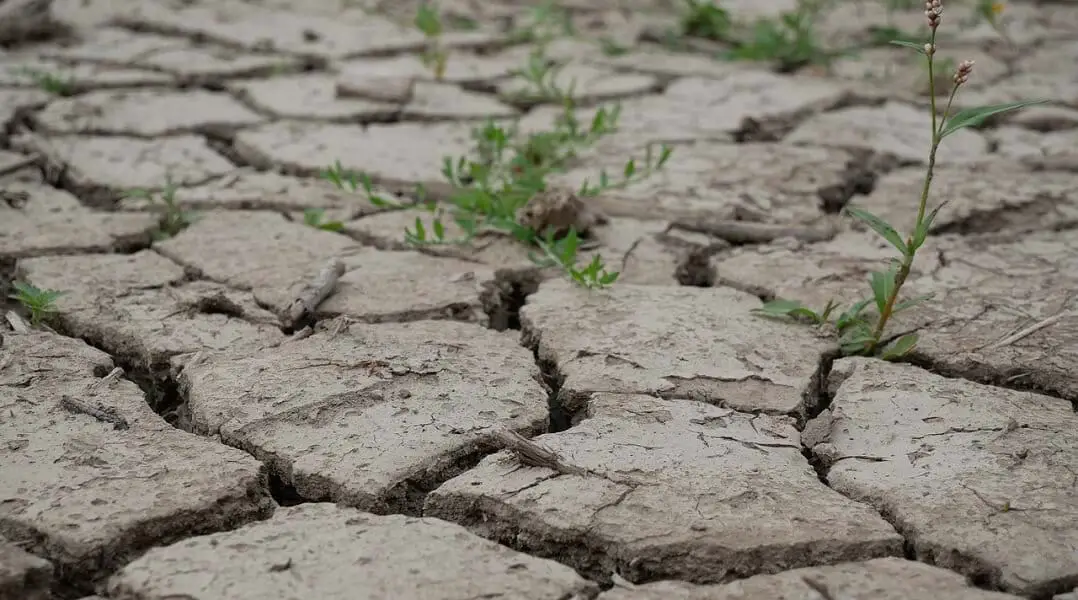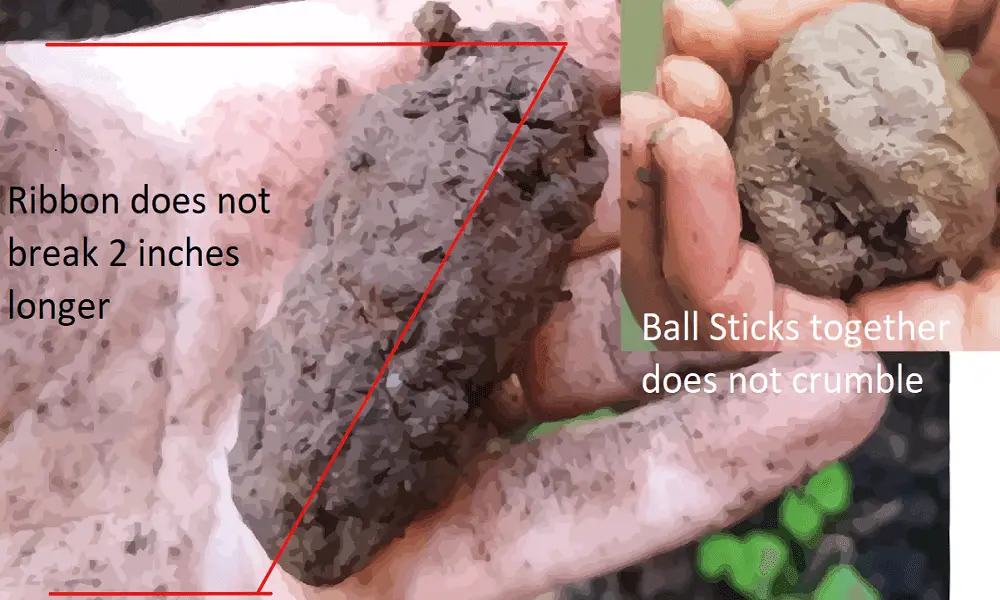Your Green Manure For Clay Soil Guide
Green Manure to Improve Your Garden

Clay soil causes many issues when we are trying to create a vibrant, lush garden and maximize our yields.
Most plots filled with this type of matter are heavy, compacted together, and barley let any of our water properly flow and drain through it. Then when the soil is wet, it can limit air exchange to the roots, typically causing our plants to drown.
The majority of our garden crops like to grow in airy, light, and adequately draining soil to achieve their best vegetative growth and final yields.
Keep reading to see how you can use green manure and cover crops to increase your soil fertility and create better future harvests.
Is Green Manure Good For Clay Soil?
A great way to help improve our soils is to use cover crops grown to specifically enhance the fertility of our ground.
Not only will using green manure provide benefits to improve clay soil fertility. But can also introduce added nutrients to help maximize growth for our next crop.
It is important to remember that clay soil tends to hold higher amounts of nutrients than other mediums like sand. Because of this, you will generally have to use a fewer amount of nutrients. Using green manure can help eliminate the need to use bottled fertilizers completely.
Particles that clay soil is made up of are negatively charged. This means that they will attract and hold positively charged particles. This is why it will store higher amounts of calcium, potassium, and magnesium.[7]
To help increase drainage, you might want to add peat moss, compost, cover crops, or even just leaves into the ground to allow it to aerate better. This will enable your crop roots to penetrate deeper into the land and add even more organic matter, helping us to improve the soil for the next year.
How to Identify You Have Clay Soil
If you know for a fact that you are dealing with clay soil, you can just skip this part and move to the next section.
Most outdoor soil will consist of clay particles silt, and sand. Clay particles are the smallest with silt being medium in size and sand the largest of the three.
When we have proper amounts of these 3 particles, we have what gets referred to as loam. Many people confuse topsoil for loam, but this is not always the case. Loam is about one-third of each of the 3 particle types.
To identify if you are dealing with clay soil, you need to grab it while it is moist, scoop it up with your hand and form it into a ball. Next, use your fingers to flatten the ball to a ribbon. If the soil stays in a ribbon until it is about 2 inches or longer, it is safe to say we are working with clay soil.[2]
But if you find that it breaks apart when it is between about 1 to 2 inches, you have what is considered clay loam. While not as bad as straight clay soil, it is still pretty challenging to work with. But you can convert this to an excellent growing medium significantly faster compared to heavy clay soil.
Another easy way to identify clay soil is 1 that it is sticky when wet, and when you roll the earth into balls, they retain their shape without crumbling.
What is Heavy Clay Soil?
Your soil is classified as heavy clay when the ground consists of 50 percent or more clay particles. Again, this is when the soil ribbon will not break apart until it is longer than 2 inches.

Check Your pH
While clay soil has a tendency to be alkaline in pH, this is not always the case.
It is vital to test several areas of the ground so you can gauge what the pH level is. You may need to alter your water's pH so your plants can maximize their uptake of nutrients.
The structure of the soil, especially of clay, is affected by pH. In the optimum pH range (5.5 to 7.0), clay soils are granular. They are easily worked, whereas if the soil pH is either extremely acid or extremely alkaline, clays tend to become sticky and hard to cultivate.
How Do You Enrich Clay Soil For Gardening?
Most Common Types of Green Manure for Clay Soil
Summary of Green Manure For Clay Soil |
||
|---|---|---|
| Plant | Adds Nitrogen | When to Plant |
| Alfalfa | YES | Apr – Jul |
| Field Beans | YES | Sep – Nov |
| Buckwheat | NO | Apr – Aug |
| Crimson Clover | YES | Apr – Sep |
| Other Clovers | YES | Apr – Aug |
| Fenugreek | NO | Mar – Aug |
| Lupins | YES | Mar – Jun |
| Mustard 1 | NO | Mar – Sep |
| Phacelia | NO | Mar – Sep |
| Fodder Radish 1 | NO | Aug – Sep |
| Rye, Grazing | NO | Aug – Sep |
| Rye, Annual Grass 2 | NO | Spring or Autumn |
| Tares | YES | Mar – Sep |
| Trefoil | YES | Mar – Aug |
What Is The Best Cover Crops For Clay Soil
The consensus seems that clover, winter wheat, and buckwheat work really well for growing in clay soil.
To allow these crops to provide the most benefit, you will want to plant them in the spring and then again at the end of your growing season.
If you need to pull the nutrient from the subsoil into your top layers, you will want to use plants with deeper taproots. Look at plants like fava beans and alfalfa to achieve this.
You are going to want to keep these cover crops over the winter. Then in the next year, you will mix your cover crops into the soil. This will provide more food to the ground and provide better aeration.
Vegetables That Grow In Clay Soil
It is important to remember that the clay soil medium will take the longest time to begin warming up in the growing season.
You may have to wait a little longer in the season before the ground has warmed enough to allow the vegetables to sprout and begin growing.[6]
Our best chance for success is to plant shallow rooting vegetables. We will still need to work on the top layers of the soil to get maximum benefit. But we will not have to go nearly as deep in the ground to prepare the soil.
After a season or two of growing shallow rooting vegetables, we can again go back and start improving the ground's lower levels. At this point, you can begin trying to introduce deeper rooting plants.
When we harvest our vegetables, we need to keep as much of the roots in the soil as possible. Remember, the more organic matter we can introduce, the more aeration will be in the ground for the next year's crops.
You can also mix in cover crops with the vegetables you are growing to add as much organic matter into your soil as possible.
-
Vegetables Most Suitable to Grow
- 1. Broccoli
- 2. Brussels Sprouts
- 3. Beans
- 4. Cabbages
- 5. Cauliflower
- 6. Kale
What Can I Add To Clay Soil To Break It Up
What Will Break Down Clay Soil?
With clay soil, you need to get a shovel to see the most improvement to the growing medium in a short time. Just using cover crops is not likely to add enough organic matter deep enough to see real progress.
Growing cover crops can help to make your soil easier to dig up. Growing the cover crops and then digging the ground up and mixing the cover crops back into the earth is a great way to get some green manure into your soil.
The easiest time to dig up the clay soil is during the fall season.[1] If you are trying to improve it during the springtime, just make sure that you are working with the ground when it is as dry as possible.
If you are working on it when wet, you will just cause the soil to clump up together even worse. But it is a lot easier to break apart the clumped and stuck together clay pieces when it is dry.
You will want to take your Cover crops, Leaves, wood chips, comfrey, or ash and mix it into the clay soil. If your clay is too thick, you should try to grow cover crops for your first year. After a year of producing these, many people find the soil is a lot easier to work with. But on the downside, you do lose a whole growing season.
If you still find that your clay soil is just too thick and you can not be bothered digging it up, raised beds will probably be easier to get into place.
Does Water Drain Through Clay Soil?
If you do not correct your clay soil by adding more organic matter to it, your garden will have extremely poor drainage.
If the ground is dense enough, you may even find that you have standing water for a day or two on top of the soil after rainfall.[5] Suppose you are trying to grow certain crops like grapes. In that case, this extra humidity significantly increases your chances of mold developing on your produce.
Another problem is if you are trying to remove the stagnated water walking around on the clay soil to further compact the area. This is the exact opposite of what you are trying to achieve. So watch out how much you are stomping around the soil after a rainfall.
Closing
Hopefully, you will be able to take the information here and use green manure to improve your clay soil. It is important to remember that this may take a couple seasons until you really see the improvements you are looking for.
To see the most benefits in the shortest time, you will have to get your hands dirty. Good soil aeration is so essential for plant growth. To get good aeration fast, you really need to dig up the ground and mix in a lot more organic matter.
The more clay you have in the soil, the more you need to watch out how much work you are performing on it while it is wet or damp. Remember, when it is in this state, your weight is enough to start clumping up the soil making it even denser and less friendly for your plants.
If your soil is not to heavy and you simply want to add some more nutrients into the ground. Just adding cover crops later in the season can get your soil nutrients back to the levels you need.
Similar Articles
Monoculture Farming Benefits and Disadvantages
Advantages Green Manure What It Is And Why To Use It Pros and Cons
What is Intercropping and Crop Rotation
[1]http://www.southernmulch.com/article-what-is-clay-loam.php
[2]https://www.gardenguides.com/110858-add-lime-fertilizer.html
[3]http://greenharvest.com.au/GreenGardenNotes/OrganicSoilImprovement.html#:~:text=Green%20manures%20to%20particularly%20improve,nutrients%20and%20dry%20out%20quickly
[4]https://www.greenmanure.co.uk/pages/choosing-the-right-green-manure
[5]https://www.gardeningknowhow.com/garden-how-to/soil-fertilizers/yard-drainage-problems.htm#:~:text=Most%20minor%20garden%20and%20lawn%20drainage%20issues%20are%20caused%20by%20clay%20soil.&text=Clay%20soil%20is%20more%20dense,steps%20to%20improve%20clay%20soil
[6]https://growtheherbs.com/vegetables-that-grow-in-clay-soil-best-crops-for-clay-soil/
[7]https://www.thespruce.com/understanding-and-improving-clay-soil-2539857#:~:text=Soil%20that%20consists%20of%20over,do%20a%20simple%20soil%20test
[8]https://www.gardeningknowhow.com/edible/grains/cover-crops/cover-crops-for-clay-soil.htm
[9]https://www.theguardian.com/lifeandstyle/2010/sep/04/alys-fowler-green-manure
[10]http://pss.uvm.edu/ppp/pubs/oh34.htm